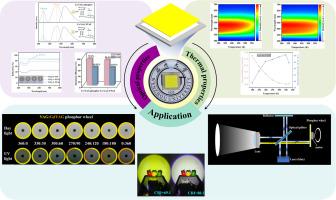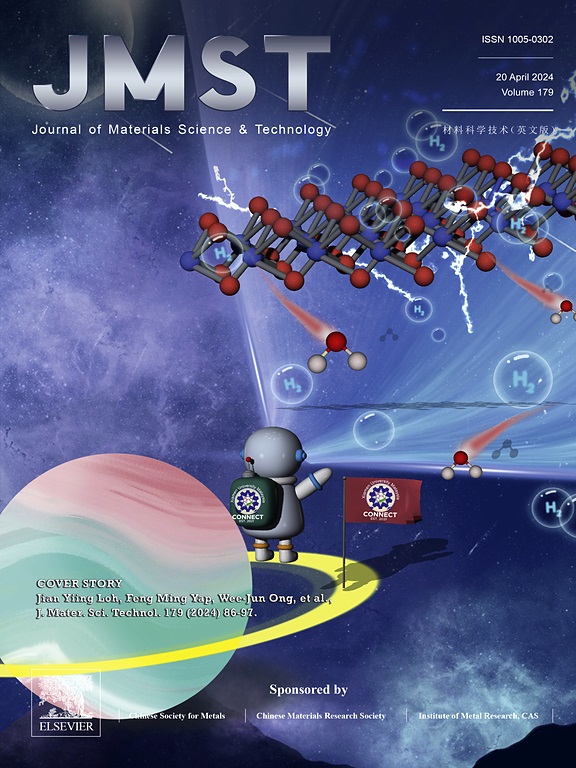Dichromatic fluorescent splicing color wheel: Enabling high-quality laser lighting on high thermal conductivity AlN substrate
IF 11.2
1区 材料科学
Q1 MATERIALS SCIENCE, MULTIDISCIPLINARY
引用次数: 0
Abstract
In recent years, the development of solid-state lighting devices has increasingly shifted towards high-power laser illumination, making it imperative to develop fluorescent conversion materials with exceptional thermal stability and luminous quality. In this study, we introduced a highly reflective TiO2 substrate in combination with a high thermal conductivity AlN substrate to design a Ce:YAG-PiG-TiO2-AlN Film (Ce:YAG PTAF) color converter with outstanding photothermal performance. Remarkably, the thermal conductivity of this material reaches 48.28 W m⁻¹ K⁻¹. Notably, the optimized PTAF can withstand a high-power output of up to 12.14 W in a static environment, with a maximum luminous flux (LFmax) of 2284.6 lm and maximum luminous efficacy (LEmax) of 222.35 lm W⁻¹, showcasing its excellent optical properties. Furthermore, the fabricated Ce:YAG-PiG-TiO2-AlN-Wheel (Ce:YAG PTAW), equipped with a motor operating at 7200 r/min, emits an extraordinary brightness of 4404 lm under 88 W of ultra-high laser irradiation, with stability surpassing that of commercial silicone color wheels, thanks to its superior Li2O-Al2O3-SiO2 (LAS) glass system. Interestingly, we designed an innovative spatially separated two-color segmented wheel structure, effectively mitigating the photon reabsorption phenomenon caused by the overlap of the fluorescent powder absorption peaks. When the ratio of Ce:YAG to Ce:GdYAG is 240:120, it yields white light with a color rendering index (CRI) of 80.2, and luminous flux remaining at 3317.8 lm. When encapsulated in a reflective module, it accurately reflects the true color states of objects. These results collectively indicate that both Ce:YAG PTAF and PTAW possess significant application potential in the realm of high-power laser illumination.

求助全文
约1分钟内获得全文
求助全文
来源期刊

Journal of Materials Science & Technology
工程技术-材料科学:综合
CiteScore
20.00
自引率
11.00%
发文量
995
审稿时长
13 days
期刊介绍:
Journal of Materials Science & Technology strives to promote global collaboration in the field of materials science and technology. It primarily publishes original research papers, invited review articles, letters, research notes, and summaries of scientific achievements. The journal covers a wide range of materials science and technology topics, including metallic materials, inorganic nonmetallic materials, and composite materials.
 求助内容:
求助内容: 应助结果提醒方式:
应助结果提醒方式:


